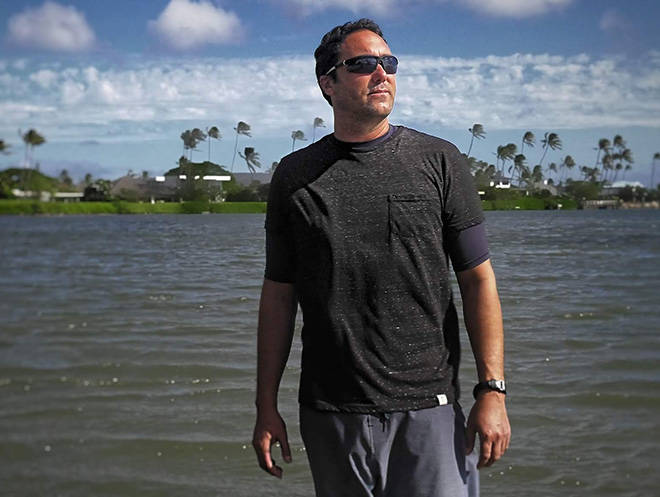UH study suggests Hawaii has double the fresh water

COURTESY UNIVERSITY OF HAWAII
University of Hawaii research affiliate faculty member Eric Attias, at Wailupe Beach Park on Oahu, says findings of a new volcanic hydrology study will change the way Hawaii officials calculate sustainable yields and aquifer storage.
Fresh water from island aquifers is a precious resource that offers life and ultimately constrains development, commerce and population.
A new University of Hawaii study, however, has discovered a vast submarine reservoir of fresh water off the western coast of Hawaii island and suggests that all the islands of Hawaii — as well all volcanic islands around the world — have similar plumbing with twice as much fresh water to tap into.
The findings, published today in the journal Science Advances, could have major implications for water resource management, sustainable development and the ability of islands to cope with declining fresh water sources as climate change worsens in the coming decades.
Using new electronic imaging technology similar to what’s used for oil and gas exploration, the scientists found a large aquifer of fresh water off Hawaii island, connected to and fed by Hualalai aquifer, according to the study. An onshore-to-offshore movement of fresh water was seen through a multi-layer volcanic formation of basalts embedded between layers of ash and soil, and through underground lava tubes.
In addition, multiple onshore drilling studies conducted across Hawaii island supported the transport mechanism of fresh water from onshore to offshore, according to the study, and helped to account for a previously documented discrepancy between high-elevation fresh water recharge and coastal discharge at Hualalai.
The system unveiled by this study conflicts from conventional groundwater models.
Don't miss out on what's happening!
Stay in touch with breaking news, as it happens, conveniently in your email inbox. It's FREE!
For the Hualalai coastline, the scientists found evidence of submarine vents discharging fresh water into the ocean far offshore, according to the study.
“It’s a paradigm shift,” said Eric Attias, the UH research affiliate faculty member who led the marine geophysics campaign. It will change the way Hawaii officials calculate sustainable yields and aquifer storage, he said.
Attias said that while no similar electromagnetic studies have been performed offshore at any other volcanic islands to confirm the mechanism, similar studies have been conducted in coastal areas of numerous other volcanic islands — including on Maui.
Those studies, he said, have revealed similarly layered volcanic formations, which suggest that submarine aquifers exist at all volcanic islands, including those in the Hawaiian islands. Attias said he would also expect to see a reservoir of water off the coast of East Hawaii.
“The lack of water is a significant factor in controlling development in Maui County,” said county Planning Director Michele McLean, adding that if the amount of water were doubled, it would probably allow for more development.
But, she said, the source of water isn’t necessarily the problem.
For example, Haleakala is said to contain significant amounts of water, but getting to it has been prohibitive considering the needed infrastructure, including wells, pumps and transmission lines.
Attias, however, said tapping into the newly discovered water reservoir would be relatively inexpensive and efficient using an underwater pump and no unsightly rig above the ocean’s surface.
He said it would certainly be less expensive than desalination, a technology that has been considered by state lawmakers and by more than one county in Hawaii.
With offshore reservoirs considered more resilient to climate change-driven droughts, volcanic islands worldwide can potentially consider these resources in their water management strategies.
“When you map out the last 100 years, you see that rainfall is decreasing,” Attias said.
The study was conducted as a part of the National Science Foundation-supported ‘Ike Wai project, a UH project that aims to increase understanding of Hawaiian island hydrology.



